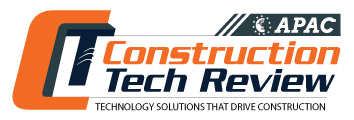THANK YOU FOR SUBSCRIBING

The Stigma of Job Site Inspections
Richard R. Flores, Senior Safety Manager, Hathaway Dinwiddie

 Richard R. Flores, Senior Safety Manager, Hathaway Dinwiddie
Richard R. Flores, Senior Safety Manager, Hathaway DinwiddieAs a Safety Manager in the construction industry, there has always been a stigma with safety inspections or audits and the documentation of observations. A paranoia that sets in with the job site managers when observations are documented and viewable in black and white. So how do we alleviate this stigma and create a positive safety culture while feeling encouraged to do so? In the end, the objective is to create transparency within a safety program to create a positive safety culture and that can only be accomplished if the safety program is understood by everyone in the company. In California, the safety program is known as the Injury and Illness Prevention Program (IIPP). The IIPP is supported by several detailed programs such as heat illness, confined spaces, silica exposure, and many more depending on a company’s method of operation. For this article, we’ll narrow our focus down to the IIPP and a few of its sections.
First, it’s important for management to buy in to the IIPP from the beginning. This usually isn’t a problem if management is involved in the process of developing and updating the program.
The State of California requires the program to exhibit nine sections: responsibility, compliance, communication, hazard assessment, accident/incident investigation, hazard correction, training, recordkeeping, and employee access to the IIPP. We can further narrow this conversation down to the sections on responsibility, hazard assessment, hazard correction, and recordkeeping. If the responsibilities are clearly defined and each level of management and labor understand those responsibilities, there should be no misinterpretation, if one or a few of those responsibilities involve hazard assessment, hazard correction, and recordkeeping.
Safety programs are an animal that feeds off documentation; “if it’s not on paper, then it didn’t happen”, would be the mantra and ill effects of not feeding the animal. I use the analogy of an “animal” because an IIPP is a living, breathing document that is meant to change with the times and the company’s and states regulatory standards. If observations are discovered during a hazard assessment (inspection) they would obviously be documented and therefore any corrections would also be documented. At this point, the stigma should end there with the negating of a hazardous observation with a correction that plans to prevent recurrence of that hazard.
As an inspector walks through their inspection there must be communication with the site supervisors, whether they are subcontractor or general contractor supervisors, each item should be discussed and distributed for review and corrective action to take place.
Other dynamics come into play as to who is responsible for a hazardous condition and a short investigation would ensue to place the responsibility on the correct party. Hazardous acts are much easier to direct due to witnessing and identification of the person committing the act contrary to regulatory, general contractor, or subcontractor standards. In any case, observations must be documented in writing, photographed, if possible, communicated to the responsible party, then corrected and photographed with the intent to prevent further occurrences.
“At this point, the stigma should end there with the negating of a hazardous observation with a correction that plans to prevent recurrence of that hazard”
When the process of a hazard assessment is understood through an understanding of the IIPP, there should be clarity as to how this system should be utilized and how it works. There may need to be a metric set in place with incentives to meet those metrics, but that would be another conversation for the section on compliance, which includes incentives and disciplinary action. The importance of this protocol cannot be over emphasized in the tracking of job site hazards and the actions taken to reduce the risk involved when a hazard or hazardous act may ultimately cause an injury. In the end that is the purpose of a safety program, injury and illness prevention.
Read Also
Development of the Logistics Warehousing Market in Brazil
Driving Innovation and Preserving Tradition
Operational Leadership VS Field Leadership in the Utility Construction Business
People-First Innovation: Developing Virtual Design and Construction (VDC) Training Programs to Empower Field Team Members
Sustainable Projects: Aligning Business and Purpose in Latin America
Engage Smarter: Why Constraints Matter More Than Hazards

 Copyright © 2025 All Rights Reserved | by:
Copyright © 2025 All Rights Reserved | by: Construction Tech Review
| Subscribe | About us | Sitemap| Editorial Policy| Feedback Policy














